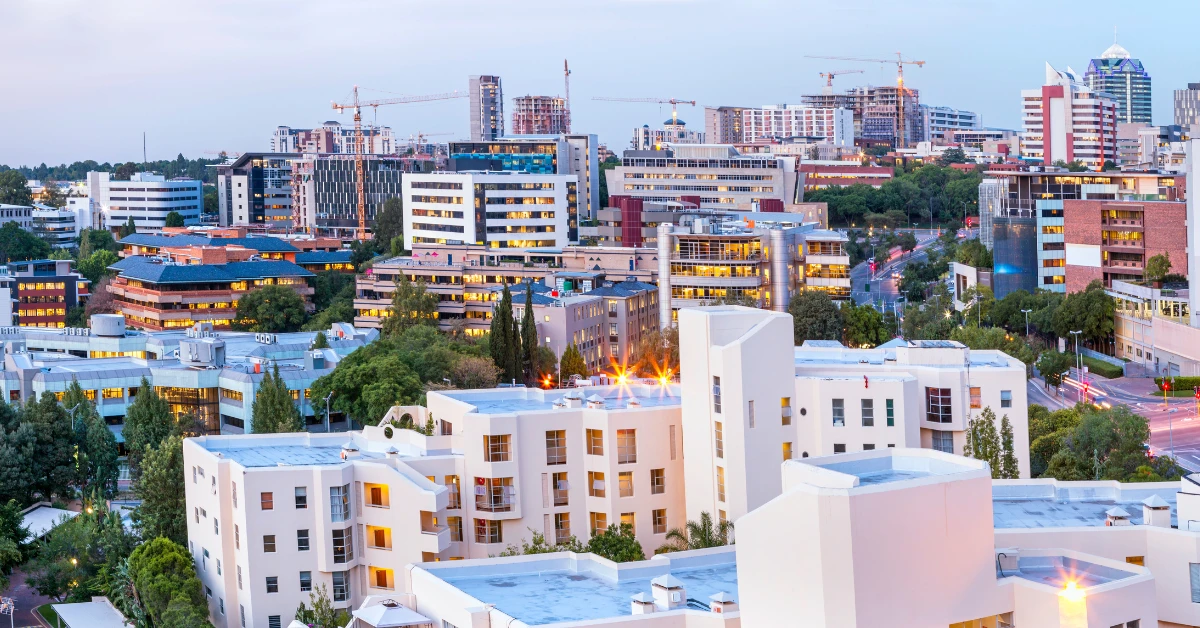The Definitive Guide to Johannesburg North Attractions
The Definitive Guide to Johannesburg North Attractions
Blog Article
The Best Guide To Johannesburg North Attractions
Table of Contents7 Easy Facts About Johannesburg North Attractions DescribedThe Only Guide to Johannesburg North AttractionsGetting The Johannesburg North Attractions To WorkTop Guidelines Of Johannesburg North AttractionsWhat Does Johannesburg North Attractions Do?The Johannesburg North Attractions Diaries
The city expanded on the edge of the Witwatersrand Key Coral reef, a below ground stratum of gold-bearing quartz-silica conglomerate that arcs for hundreds of miles beneath the Highveld - Johannesburg North attractions. Most of the gold mines in the city discontinued procedure in the 1970s, yet in its day the Witwatersrand gold industry accounted for more than 40 percent of the world's annual gold manufacturing.Johannesburg has a pleasant environment. The city appreciates about 8 hours of sunlight per day in both wintertime and summertime.
What rain the city gets falls nearly specifically in the summertime months, usually in magnificent late-afternoon electrical tornados., where numerous residents still count on coal for gas.

Not known Factual Statements About Johannesburg North Attractions
The balance of the city is inhabited by whites. Accommodation differs in character and quality. Soweto is infamous for its unlimited rows of municipally developed, two-room matchbox homes, yet it likewise has a couple of flourishing territories as well as teeming squatter camps, where 10s of thousands live without water, electrical energy, or hygiene centers.
Physical growth, although somewhat limited by transport, proceeded promptly as migration to South Africa, and Johannesburg in certain, raised substantially. This trouble was solved in the 1930s when the automobile was introduced in mass manufacturing to South Africa. Cars were, generally, constrained to the affluent, and allowed them to relocate to the north of the city and commute into the centre.
A lot of inadequate suburban areas were mixed, with bad blacks and whites living with each other, although the affluent residential areas were normally booked for whites.
The previous system of eleven numbered regions was reorganised in 2006. Marshalltown, as seen from the top of the Carlton Centre. The M1 and M2 run behind the buildings, and the southern suburban areas prolong past the highway limit. The inner city of Johannesburg is located within the city's Region F. The estimated population of the region is 200,000, [] The number of people living in the internal city on a casual basis is unknown, as numerous are unlawful immigrants. Many higher-income locals and white people have relocated to the north residential areas and have actually been changed by lower-income black people. The unemployment, education and learning, and age accounts of the area i thought about this are all my latest blog post unknown, due to the trouble of getting reputable info regarding the area.
9 Easy Facts About Johannesburg North Attractions Described
Yeoville and Bellevue have a mix of apartment and single residential systems on tiny lots. The region lies on a mountainous divide that runs from eastern to west. One of the most conspicuous geographic function is Observatory Ridge, which is called for the big observatory situated on it. The recreational areas are no much longer used, because of safety and security issues.

Fascination About Johannesburg North Attractions
R. Tambo International Airport). The eastern suburbs are several of the earliest locations of Johannesburg, there are huge neighborhoods of Jewish and various other European histories, most of the population is English speaking. There are three golf training courses as well as a number of secured ridges with viewsites. There are numerous well-developed and up-market home entertainment and shopping locations in the east such as the Eastgate Purchasing Centre and the Greenstone mall.
The location is primarily composed of old "matchbox" residences, or four-room homes developed by the government, that were built to provide economical accommodation for black workers during apartheid. Soweto is an abbreviation, representing "South Western Townships". Road after road in this field is lined with matchboxes; nonetheless, there are a couple of smaller sized areas where thriving Sowetans have actually constructed houses that are a lot more comparable in stature with those in more wealthy residential areas.
Hostels are another prominent physical function of Soweto. Initially developed to house male migrant workers, many have been enhanced as residences for pairs and families. The N1 Western Bypass skirts the eastern limit of Soweto. The residential area was not historically enabled to create employment centres within the area, so mostly all of its locals are commuters to various other components of the city.
Top Guidelines Of Johannesburg North Attractions
The household areas in the north residential areas are primarily official, with no substantial locations of casual housing, or real estate that lacks a long-term structure. This is a well established location, there is a trend of land use modification from residential to business, specifically along major arterial roadways and around established nodes.
Roads Go Here to the eastern and west are less well developed, as there are no freeways taking a trip in that direction. In the direction of the north border of the city, the thickness of advancement lowers, leaving big areas of undeveloped land around Midrand.
Getting The Johannesburg North Attractions To Work
, which is located on a hill neglecting the inner city and Hillbrow.
Report this page